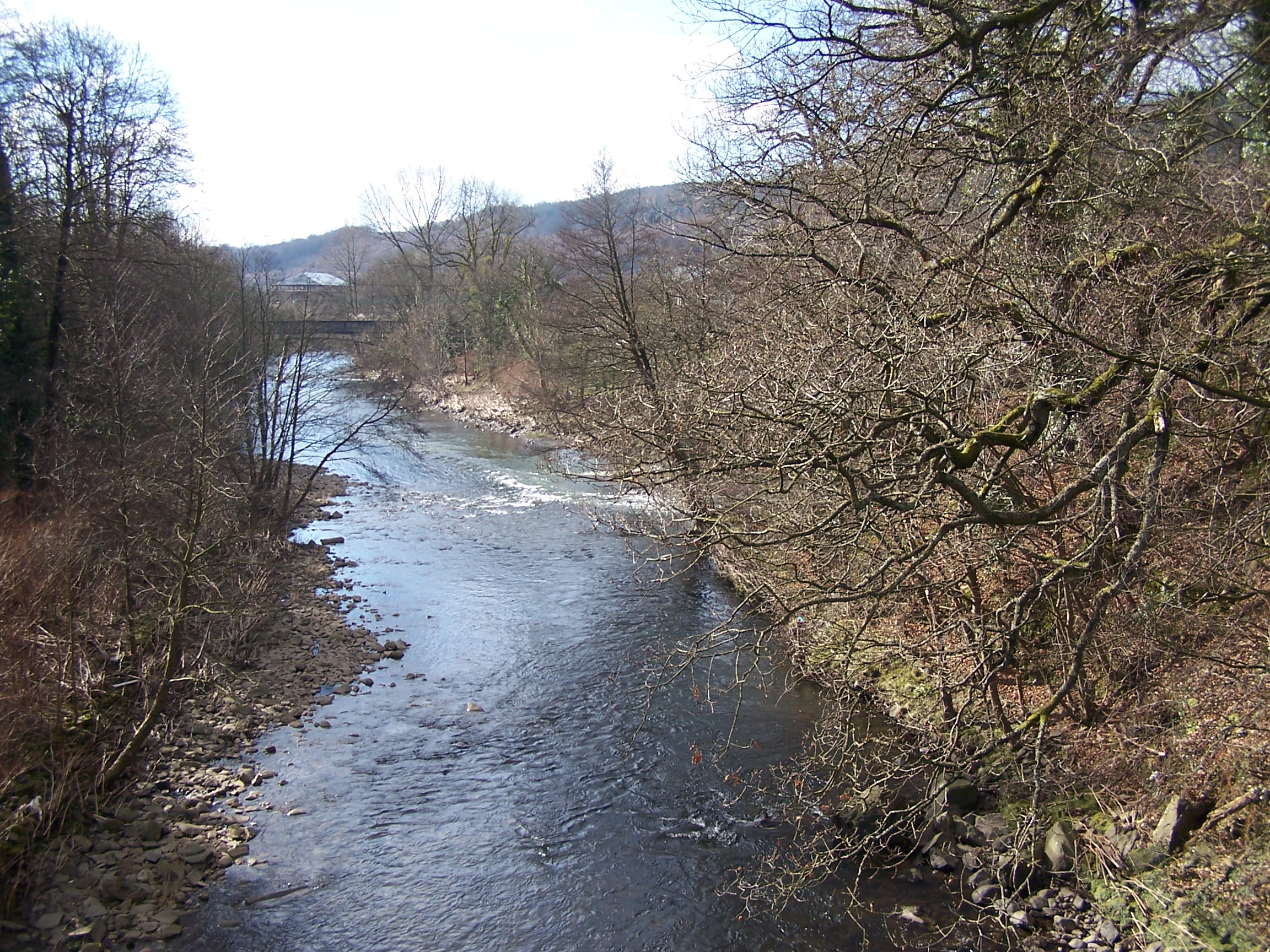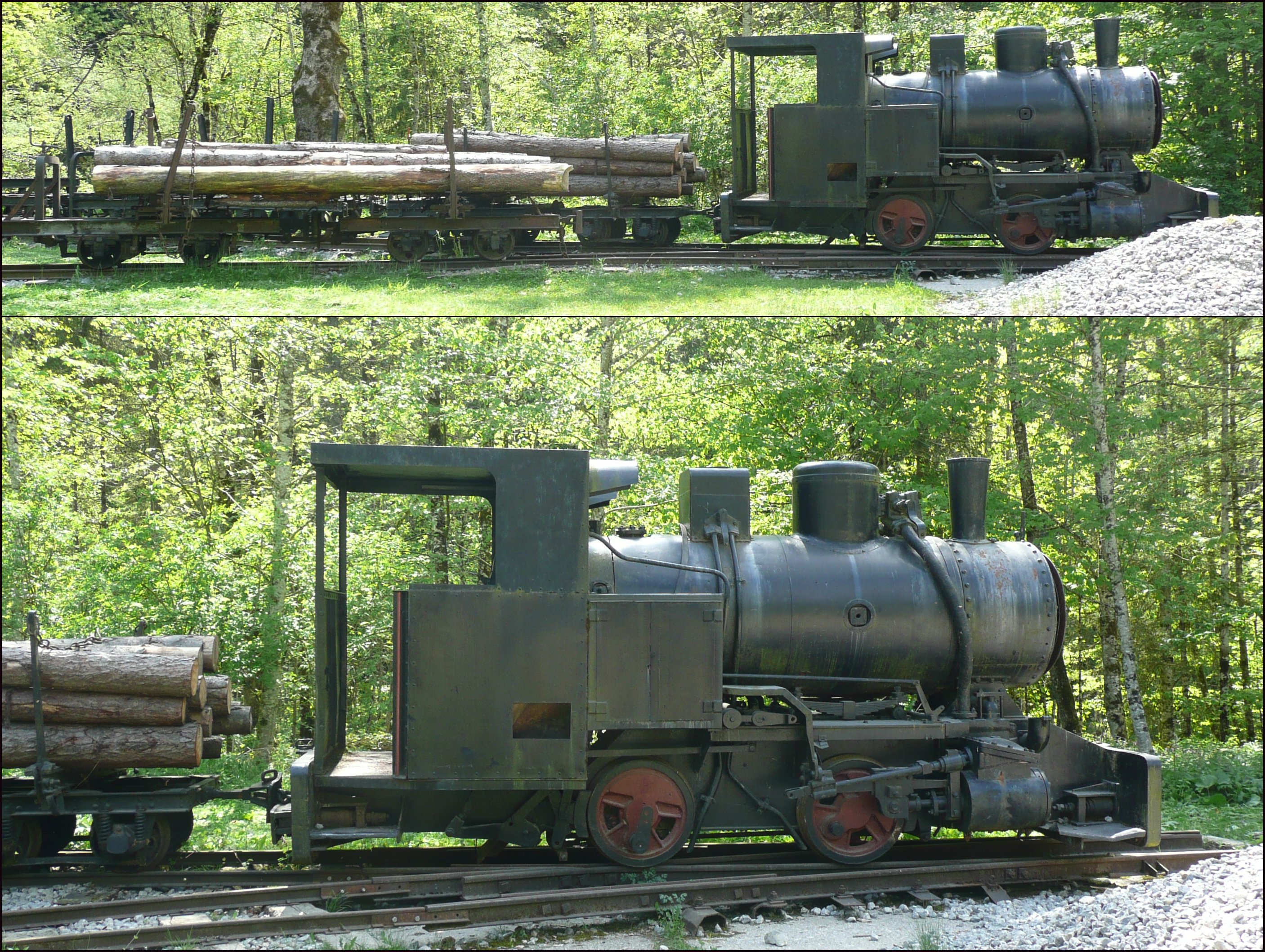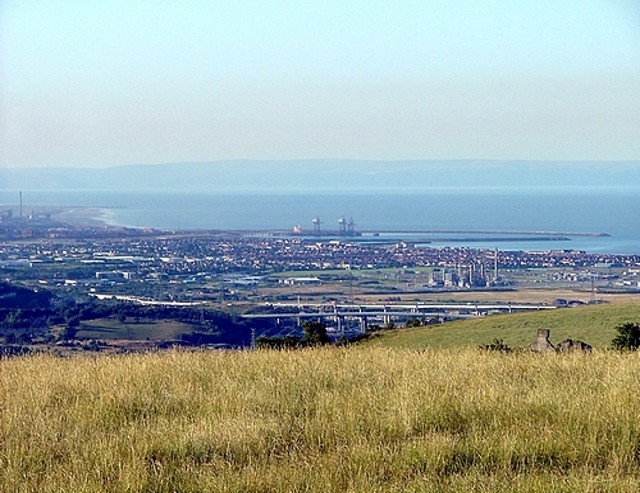|
Swansea And Neath Railway
The Vale of Neath Railway (VoNR) was a broad gauge railway company, that built a line from Merthyr Tydfil and Aberdare to Neath, in Wales, chiefly to transport the products of the Merthyr iron industries to ports on Swansea Bay. The railway focused on transporting coal from the rapidly developing rich colliery area around Aberdare. When the narrow (standard) gauge Newport, Abergavenny and Hereford Railway (NA&HR) made moves to link to the area, with its Taff Vale Extension line, the Vale of Neath Railway saw that there was potential in connecting up; it laid a third rail to make mixed gauge. The link was made in 1864 and coal was conveyed to London and the north-west of England by that route. By that time the VoNR and the NA&HR had been absorbed into the Great Western Railway (GWR) system. Connections to the docks at Swansea had not been fruitful in the early days, and the Swansea and Neath Railway, soon taken over by the VoNR, made some improvement, but the docks area remained ... [...More Info...] [...Related Items...] OR: [Wikipedia] [Google] [Baidu] |
Aberdare
Aberdare ( ; cy, Aberdâr) is a town in the Cynon Valley area of Rhondda Cynon Taf, Wales, at the confluence of the Rivers Dare (Dâr) and Cynon. Aberdare has a population of 39,550 (mid-2017 estimate). Aberdare is south-west of Merthyr Tydfil, north-west of Cardiff and east-north-east of Swansea. During the 19th century it became a thriving industrial settlement, which was also notable for the vitality of its cultural life and as an important publishing centre. Etymology The name ''Aberdare'' means "mouth/confluence of the river dare", as the town is located where the Dare river ( cy, Afon Dâr) meets the Cynon ( cy, afon Cynon). While the town's Welsh spelling uses formal conventions, the English spelling of the name reflects the town's pronunciation in the local Gwenhwyseg dialect of South East Wales. ''Dâr'' is an archaic Welsh word for oaks (the plural of ''derwen''), and the valley was noted for its large and fine oaks as late as the nineteenth century. In ancien ... [...More Info...] [...Related Items...] OR: [Wikipedia] [Google] [Baidu] |
Aberdare Railway Station
, symbol_location = gb , symbol = rail , image = Aberdare railway station (geograph 5510248).jpg , borough = Aberdare, Rhondda Cynon Taf , country = Wales , coordinates = , grid_name = Grid reference , grid_position = , manager = Transport for Wales , platforms = 1 , code = ABA , classification = DfT category E , years = 3 October 1988 , events = Station opens , mpassengers = , footnotes = Passenger statistics from the Office of Rail and Road , mapframe=yes , mapframe-zoom = 13 Aberdare railway station ( cy, Aberdâr) is a railway station serving the town of Aberdare in Rhondda Cynon Taf, Wales. It is the terminus of the Aberdare branch of the Merthyr Line, 22½ miles (36 km) directly north of . Passenger services are provided by Transport for Wales. Overview The station at this locat ... [...More Info...] [...Related Items...] OR: [Wikipedia] [Google] [Baidu] |
Glamorganshire Canal
The Glamorganshire Canal in South Wales, UK, was begun in 1790. It ran along the valley of the River Taff from Merthyr Tydfil to the sea at Cardiff. The final section of canal was closed in 1951. History Construction started in 1790; being watched over by the wealthy ironmasters of Merthyr Tydfil, including Richard Crawshay of the Cyfarthfa Ironworks, the canal was thought up as a solution to the issue of transporting the goods (iron ore, coal and limestone) from the valleys to Cardiff, where they would be shipped around the world. Thomas Dadford was hired to inspect and plan a route for the canal and, with support from Lord Cardiff, the canal was authorised by Parliament on 9 June 1790. Almost £90,000 was raised in preparation of constructing the canal and would be linked to any works within four miles of the canal, through branch canals and linking railways. However, during the few miles approaching Cardiff, the canal suffered from severe water shortages, resulting in goods ... [...More Info...] [...Related Items...] OR: [Wikipedia] [Google] [Baidu] |
Abercynon
Abercynon (), is both a village and a community (and electoral ward) in the Cynon Valley within the unitary authority of Rhondda Cynon Taf, Wales. The community comprises the village and the districts of Carnetown and Grovers Field to the south, Navigation Park to the east, and Glancynon (or Aber-taf) to the north. The population of Abercynon was recorded as 6,428 in the 2001 Census,Davies (2008), p.4 decreasing to 6,390 at the 2011 Census, despite more than a hundred additional households built over this period (from 2,582 in 2011 to 2,694 by 2011). The electoral ward of Abercynon includes both the community of Abercynon, but also takes into account the nearby villages of Pontcynon, Ynysboeth and Tyntetown further north. Abercynon is approximately north of Cardiff and approximately from Swansea. The rivers Taff and Cynon converge at Watersmeet near Martin's Terrace. Abercynon used to have many churches, chapels and pubs. There are now only four public houses left - The Tho ... [...More Info...] [...Related Items...] OR: [Wikipedia] [Google] [Baidu] |
Aberdare Canal
The Aberdare Canal (Welsh: Camlas Aberdâr) was a canal in Glamorgan, Wales which ran from Aberdare to a junction with the Glamorganshire Canal at Abercynon. It opened in 1812, and served the iron and coal industries for almost 65 years. The arrival of railways in the area did not immediately affect its traffic, but the failure of the iron industry in 1875 and increasing subsidence due to coal mining led to it becoming uneconomic. The Marquess of Bute failed to halt its decline when he took it over in 1885, and in 1900 it was closed on safety grounds. The company continued to operate a tramway until 1944. Most of the route was buried by the construction of the A4059 road in 1923, although a short section at the head of the canal remains in water and is now a nature reserve. The company was wound up in 1955. History By the 1780s, industry in the area around Aberdare was developing. John Maybery and Thomas Wilkins owned an ironworks at Hirwaun, which was leased by Anthony Baco ... [...More Info...] [...Related Items...] OR: [Wikipedia] [Google] [Baidu] |
Cynon Valley
Cynon Valley () is a former coal mining valley in Wales. Cynon Valley lies between Rhondda and the Merthyr Valley and takes its name from the River Cynon. Aberdare is located in the north of the valley and Mountain Ash is in the south of the valley. From 1974 to 1996 Cynon Valley was a local government district. According to the 2001 census, the Cynon Valley has a population of 63,512. In 2001 12.1% of the inhabitants were recorded as Welsh speakers. In common with some of the other South Wales Valleys, Cynon Valley had a high percentage of Welsh speakers until the early 20th century. Former district From 1974 to 1996 the Borough of Cynon Valley was one of thirty-seven districts of Wales. The district was formed from the Aberdare and Mountain Ash urban districts, the parish of Rhigos from Neath Rural District and the parish of Penderyn from Brecknockshire. It was one of six districts of Mid Glamorgan, and in 1996 was merged into the larger unitary authority of Rhondda ... [...More Info...] [...Related Items...] OR: [Wikipedia] [Google] [Baidu] |
Tramway (industrial)
Tramways are lightly laid rail transport, railways, sometimes with the wagons or carriages moved without locomotives. Because individual tramway infrastructure is not intended to carry the weight of typical standard-gauge railway equipment, the tramways over which they operate may be built from less substantial materials. Tramways can exist in many forms; sometimes just tracks temporarily placed on the ground to transport materials around a factory, mine or quarry. Many, if not most, use narrow-gauge railway technology. The trains can be manually pushed by hand, pulled by animals (especially horses and mules), cable hauled by a stationary engine, or use small, light locomotives. The term is not in use in North America but in common use in the United Kingdom, and elsewhere, where British Railway terminology and practices had large influences on management practices, terminology, and railway cultures such as Australia, New Zealand, and those parts of Asia that consulted with Bri ... [...More Info...] [...Related Items...] OR: [Wikipedia] [Google] [Baidu] |
Neath Canal
The Neath and Tennant Canals are two independent but linked canals in South Wales that are usually regarded as a single canal. The Neath Canal was opened from Glynneath to Melincryddan, to the south of Neath, in 1795 and extended to Giant's Grave in 1799, in order to provide better shipping facilities. With several small later extensions it reached its final destination at Briton Ferry. No traffic figures are available, but it was successful, as dividends of 16 per cent were paid on the shares. The canal was long and included 19 locks. The Tennant Canal was a development of the Glan-y-wern Canal, which was built across Crymlyn Bog to transport coal from a colliery on its northern edge to a creek on the River Neath called Red Jacket Pill. It closed after 20 years, but was enlarged and extended by George Tennant in 1818, to provide a navigable link from the River Neath to the River Tawe at Swansea docks. In order to increase trade, he built an extension to Aberdulais basin, w ... [...More Info...] [...Related Items...] OR: [Wikipedia] [Google] [Baidu] |
River Neath
River Neath ( cy, Afon Nedd) is a river in south Wales running south west from the point at which its headwaters arising in the Brecon Beacons National Park converge to its mouth at Baglan Bay below Briton Ferry on the east side of Swansea Bay. Course The rivers Nedd Fechan, Mellte and Hepste rise in south Powys on the southern slopes of Fforest Fawr. This headwater area is formed from Old Red Sandstone. Each then crosses a band of Carboniferous Limestone before traversing country formed by interlayered sandstones and shales traditionally referred to as the Millstone Grit. Within the limestone belt, short sections of each river flow underground, though that of the Hepste also flows at the surface during periods of particularly wet weather. The steep descent of these rivers towards the Vale of Neath, and also of the Afon Pyrddin and Afon Sychryd, tributaries of the Nedd Fechan and Afon Mellte respectively, involves the development of a number of waterfalls over resistant ban ... [...More Info...] [...Related Items...] OR: [Wikipedia] [Google] [Baidu] |
Iron Smelting
Smelting is a process of applying heat to ore, to extract a base metal. It is a form of extractive metallurgy. It is used to extract many metals from their ores, including silver, iron, copper, and other base metals. Smelting uses heat and a chemical reducing agent to decompose the ore, driving off other elements as gases or slag and leaving the metal base behind. The reducing agent is commonly a fossil fuel source of carbon, such as coke—or, in earlier times, charcoal. The oxygen in the ore binds to carbon at high temperatures due to the lower potential energy of the bonds in carbon dioxide (). Smelting most prominently takes place in a blast furnace to produce pig iron, which is converted into steel. The carbon source acts as a chemical reactant to remove oxygen from the ore, yielding the purified metal element as a product. The carbon source is oxidized in two stages. First, the carbon (C) combusts with oxygen (O2) in the air to produce carbon monoxide (CO). Second, the ... [...More Info...] [...Related Items...] OR: [Wikipedia] [Google] [Baidu] |
Baglan Bay
Baglan Bay ''(Welsh: Bae Baglan)'' is a part of the Swansea Bay coastline and a district of Neath Port Talbot county borough, Wales. Baglan Bay is also the name of a local government community. Baglan Bay is served by the M4 Motorway and the A48 road which traverse the northeastern edge of the area. History In the 19th century, coal, tinplate and pottery were exported from Baglan Pill. In 1963 BP (trading as British Hydrocarbon Chemicals, Ltd.) opened petrochemical plants at Baglan Bay, partly to benefit from the proximity of the BP Oil Refinery at Llandarcy, which could supply feedstocks. The plants produced 125,000 tons of petrochemicals during the first year of operation. The main products were ethylene (50-60,000 tons a year), ethylene dichloride (64,000 tons), propylene, butadiene (5000 tons), and isobutylene. Several other companies built chemical plants at Baglan Bay. Forth Chemicals (a joint subsidiary of Monsanto and BHC), had a styrene monomer plant within the BHC s ... [...More Info...] [...Related Items...] OR: [Wikipedia] [Google] [Baidu] |
Glynneath
Glynneath ( cy, Glyn-nedd "valley of the River Neath"), also spelt ''Glyn-neath'' and ''Glyn Neath'', is a small town, community and electoral ward lying on the River Neath in the county borough of Neath Port Talbot, Wales. It was formerly in the historic county of Glamorgan. Glynneath ward covers only part of the community, with some 840 electors included in the neighbouring ward of Blaengwrach. Industrialisation reached Glynneath when coal mining started in 1793, and rapidly expanded when the Neath Canal came to the village in 1775. Many features of the old canal still survive to the present time. There are waterfalls to the north east at Pontneddfechan near the Brecon Beacons and large parts of the rural area are heavily forested. Notable buildings Glynneath is home to the ruins of Aberpergwm House. Once owned by Rhys ap Siancyn, Aberpergwm House became the home of the Williams family, Welsh gentry with a strong tradition of using the Welsh language over English. Their ... [...More Info...] [...Related Items...] OR: [Wikipedia] [Google] [Baidu] |


_geograph-2571066-by-Ben-Brooksbank.jpg)







